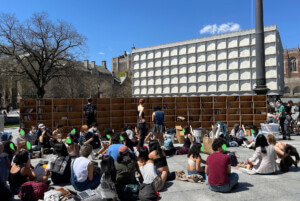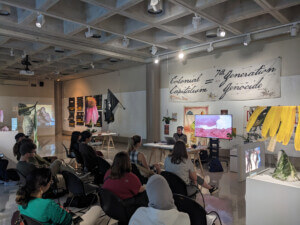Anne Holtrop’s architecture is concerned with fundamental questions about forms and materials. He doesn’t “want to define the form of things, so [he] build[s] in all kinds of constraints and conditions to make form happen in other ways,” he told AN’s executive editor Jack Murphy in a recent conversation over Zoom just before his new Siyadi Pearl Museum opened in Muharraq, Bahrain.
For the past decade, the Dutch architect has been based in Bahrain, in addition to teaching at the ETH in Zurich. His interest in craft processes powers his professional and academic activities, and he pays attention to local conditions, as seen in his piece currently on view in the inaugural Design Doha biennale.
Holtrop is also interested in the material histories of Palestine. He has led research trips to Israel and Palestine with students and will be hosting a series of talks “featuring contributions from international experts and academics working in the field or affiliated with architecture and urbanism in Israel and Palestine.” In the following conversation, Holtrop opens up about the connections between his work and his personal beliefs.
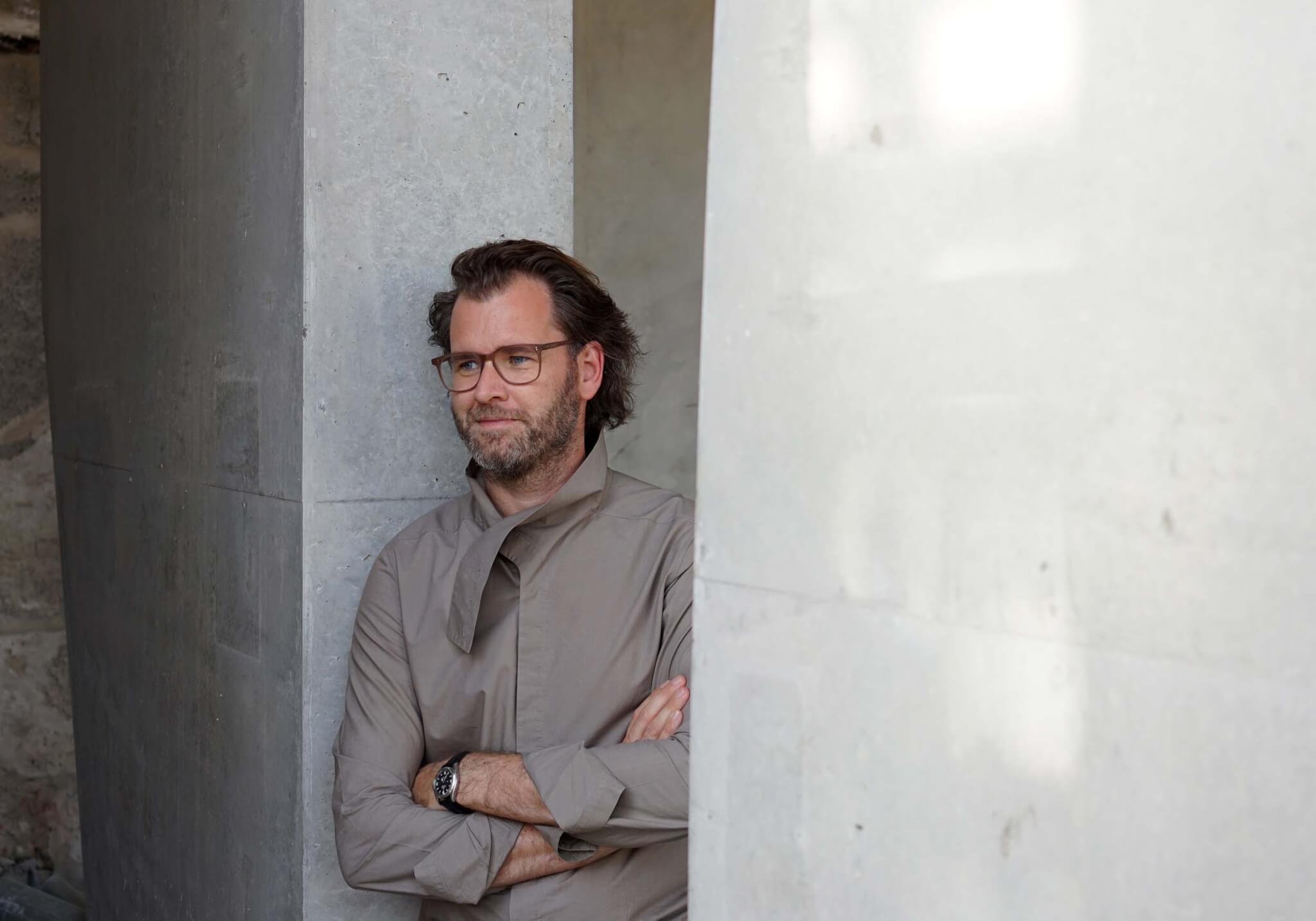
AN: Your new museum for the Pearling Path just opened. Can you tell me about this project?
Anne Holtrop (AH): The Pearling Path became a UNESCO-listed heritage site in 2012. Its museum showcases the history of pearling, which, according to archeological findings, stretches back over 2,000 years. This project is important because it showcases the pearl and its cultural history, but also because the existing architecture is beautiful due to its craft and construction.
I appreciate the opportunity to work with existing buildings and with Islamic architecture. I like the idea that things are not static but actually dynamic. Working on this museum changed my understanding of how I can form space with space: My understanding from architecture school was that material is often bound to structure. We think buildings are solid pieces where the material does everything. For me, this project is a liberation because we cannot see the structure. Here I deal with everything else except the structure; it is all about how the material response defines space, light conditions, and the experience of time.
AN: What materials are you using to shape the visitor’s experience in the museum?
AH: Within the block work walls, we used three main materials. First, we finished the walls with lime plaster and made visible its different layers and the hand of the craftsperson doing the work. We also use a special kiln-formed, translucent glass; we cannot look through it, but it filters the light. This is a response to screens of Islamic architecture. The third material is silver leaf, which is used in the main exhibition spaces and is very responsive to weather conditions, such as the humidity, salinity, and other impurities in the air. It will oxidate or patinate, so over time it will change and become darker.
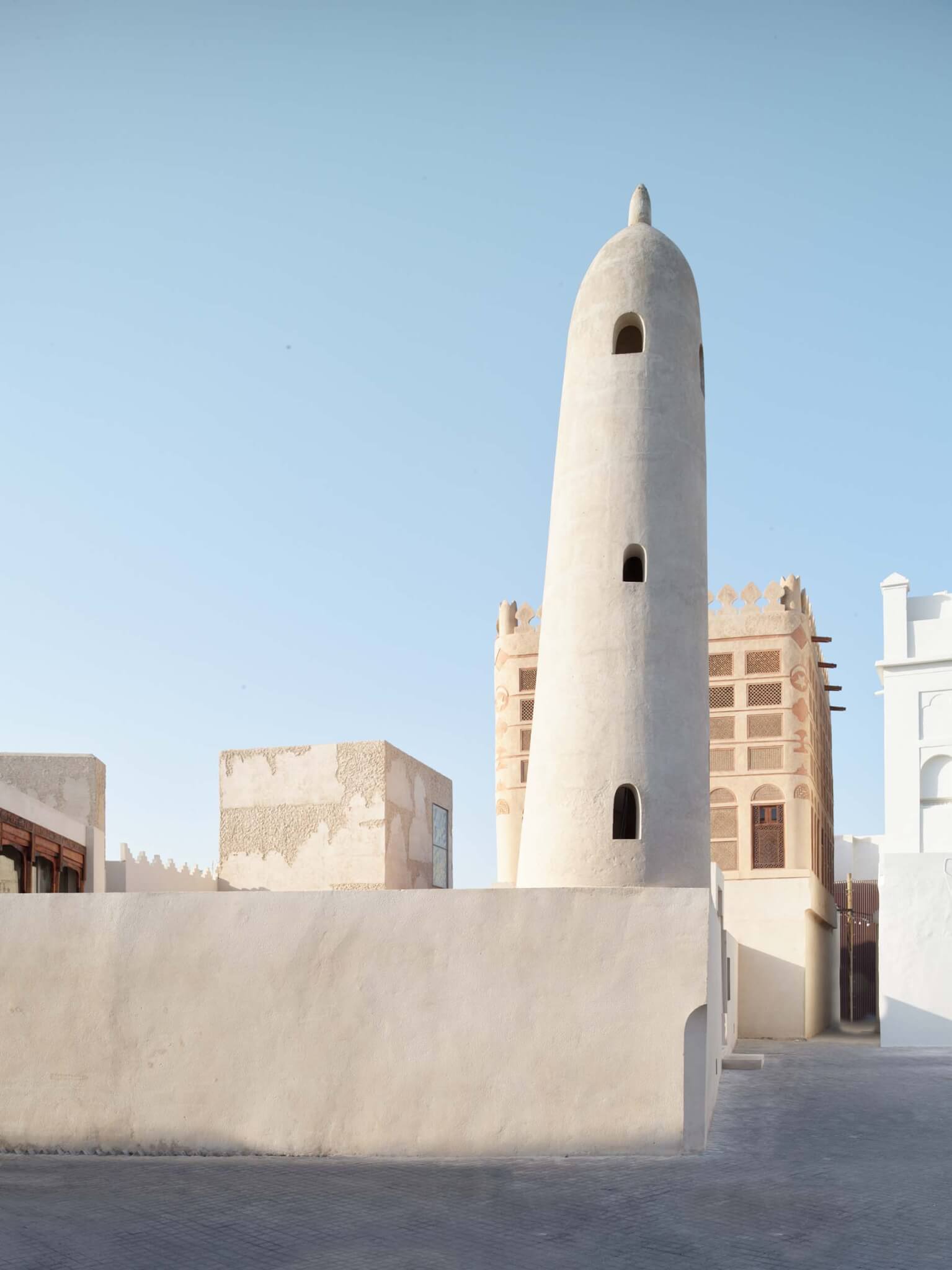
AN: What else are you working on?
AH: We are working on the Misk Art Institute in Riyadh, Saudi Arabia. It is quite large; I think it’s the size of all our previous work combined. It works with both daylight and this extreme site, which is alongside a dry riverbed that sometimes floods when it rains. We carved into the rock cliffs to make a space where the museum can be freestanding, and it will be faced in cast glass. The glass is imprinted with a material relief that responds to the limestone rock and will result in a light that is diffuse—but there is no view. It is different from working in Europe, as the light here is much stronger and brighter. The project has been under construction for about six months, and it should be finished in about 18 months.
AN: Can you share a bit about the production of this cast glass?
AH: In my designs, I very much do not want to define the form of things, so I build in all kinds of constraints and conditions to make form happen in other ways. More and more, I want material behavior to lead. I’ve been exploring casting techniques since quite early in my practice. I try to find a logic in the elements and then build something bigger. With these thick pieces of glass, you cannot stack them directly on top of each other because of their behavior when they heat up, so the pieces step both in plan and in section. The stepping creates its twisted form: Suddenly something is not a straight rectangle anymore, but an oblique one, which creates different spaces inside and outside. I like to work through how materials create forms and spaces.
AN: How do you relate this work to current discussions about labor? I’m thinking of both architectural labor and that which takes place on construction sites.
AH: Two things. First, I have my own company, and I pay the same salaries as I would pay in the Netherlands. This is difficult in Bahrain because architects here do not charge the same fees as they would elsewhere. It’s challenging, but I’m an international architect and work to international standards.
The other part relates to job sites. I strongly believe that through working here, I can change things. In the past, we have stopped work because the working conditions were not correct. It sounds bad, but that’s one thing we can do. We are lucky also because our client is often the government, and it is supportive of this position. I’ve learned that we cannot measure things in black-and-white terms; we have a lot of shades in between, and it is here where we can make improvements.
The job site in Saudi Arabia, for example, is well-organized. Its quality is in no way lower than what I would see in the Netherlands or even in Switzerland. But the conditions and amounts of labor are different, as there are many low-skilled workers from abroad. I think education will improve the quality of these things over time. In Bahrain, I’m now working with stoneworkers from Jodhpur, India. Already about one-third of the country is from India, and this has been the case for hundreds of years due to trade. The stoneworkers I work with do a fantastic job, and I find it important that they receive the appreciation and credit for this quality. I think this creates a respectful work environment.
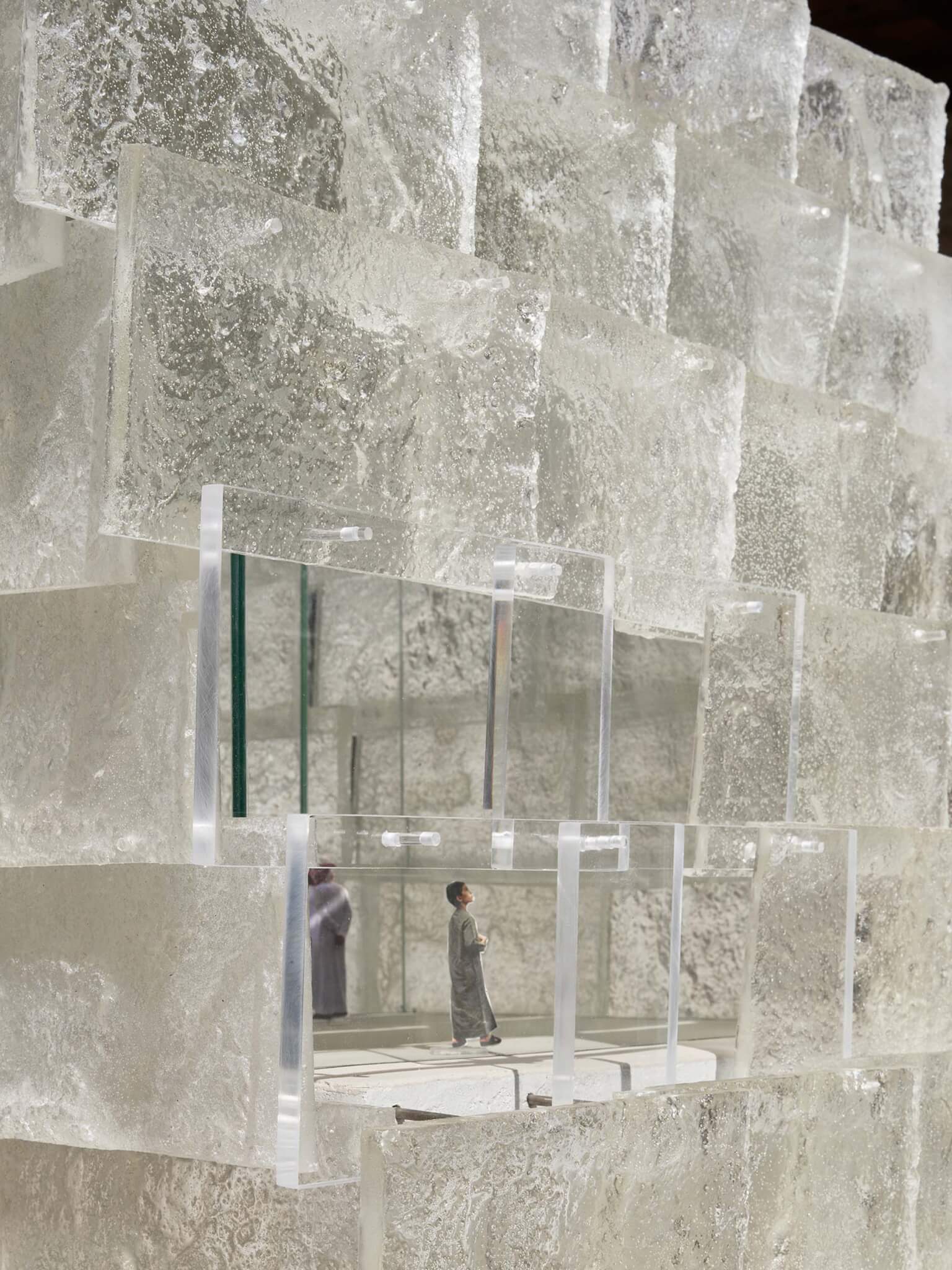
AN: At a distance, it seems important given your concerns and the way that you produce form to be close to the craftspeople making your buildings.
AH: Yes. Because for me, I think with my hands. I’m not a structured thinker; I don’t conceptualize my work beforehand. My team works like a workshop where we are testing things all the time, and they are often embedded on building sites to work with the people there to figure things out.
AN: You’ve been working in Bahrain for about a decade. How have ideas about labor changed in that time?
AH: We haven’t reached an ideal situation here. Sometimes outside voices can be strongly pre-opinionated. They can arrive with a superior view that doesn’t understand local conditions. If you think, “We achieved the highest standards in the world, and now we’re going to apply them here,” then this doesn’t work. It is still a colonial way of dealing with the world! Things change as the economy grows, so investment helps, but progress is a goal you grow towards. You cannot just snap directly into the future. The Gulf countries are still reliant on oil revenue, although Bahrain is diversifying its economy. As the economy changes to be more diversified, there will be other industries, which helps, as it requires differently trained people.
In Europe, we largely live in welfare states. We pay taxes, and we think the government will solve all the problems in the country. Here, we don’t pay taxes to the same extent, so what you see is people taking care of each other more directly. There are no homeless people on the streets, whereas I see them everywhere in Paris, for example. How people receive help is part of how you understand your environment. Charity is widely understood here because it, as zakat, is one of the five pillars of Islam.
AN: It’s useful to keep in mind that conditions vary in the region, even country to country. Thinking regionally, another thing I wanted to ask about is the conflict in Gaza. You’ve consistently been posting about it via Instagram Stories. What motivated you to use your platform in that way?
AH: I started posting things about Palestine on Instagram years ago because I was searching for what I can do to help. Growing up in the Netherlands in the 1980s, I participated in demonstrations in support of a Palestinian state. It’s an old question, as the creation of Israel wasn’t a smooth, peaceful process, and it remains unsolved even today.
Now there is more exposure, and I thought, “What can I do professionally?” I have been impressed with what Eyal Weizman does with his research. This question is connected to our profession because of how the settlements have been made and how things happened at an architectural and territorial level. As an architect, I am involved with that. I wish that the world becomes a better place for everyone, so I started to create more awareness about the specific situation in Israel and Palestine. This is in response to a European worldview, which often sees the conflict as it relates to World War II and the Holocaust.
This has also impacted my teaching at the ETH in Zurich. Last spring, I organized a semester that focused on craft in Palestine. I took 36 students there and connected them to all different kinds of craftspeople: architects, designers, artists, and chefs. But it was hard, from the moment we landed in Tel Aviv. I wanted my students to connect through culture: What can we make now? And what are we making for the future? We had a positive engagement, but it was difficult then, and now it is a lot worse.
This is related to my own experiences when I moved to Bahrain. I encountered Orientalist fantasies from people in Europe who believed the Middle East was an underdeveloped, barbaric environment and that the terms Muslim and terrorist were almost synonymous. These stigmas are strong, and they become explosive when it comes to the question of the Palestinians, which is what I want to focus on.
The situation in Palestine has been ongoing for decades. What I find the most disturbing and worrying is the growing difficulty of any possibility of debate on the issue at an academic level.
All of this was happening before the attack by Hamas on October 7. I condemn that attack. I don’t think violence serves anything, but this action has made the world clearer in terms of positions on the issue of Palestine. I’m surprised how politicians—and even heads of universities and culture—ban the possibility to talk about Palestine in any way.
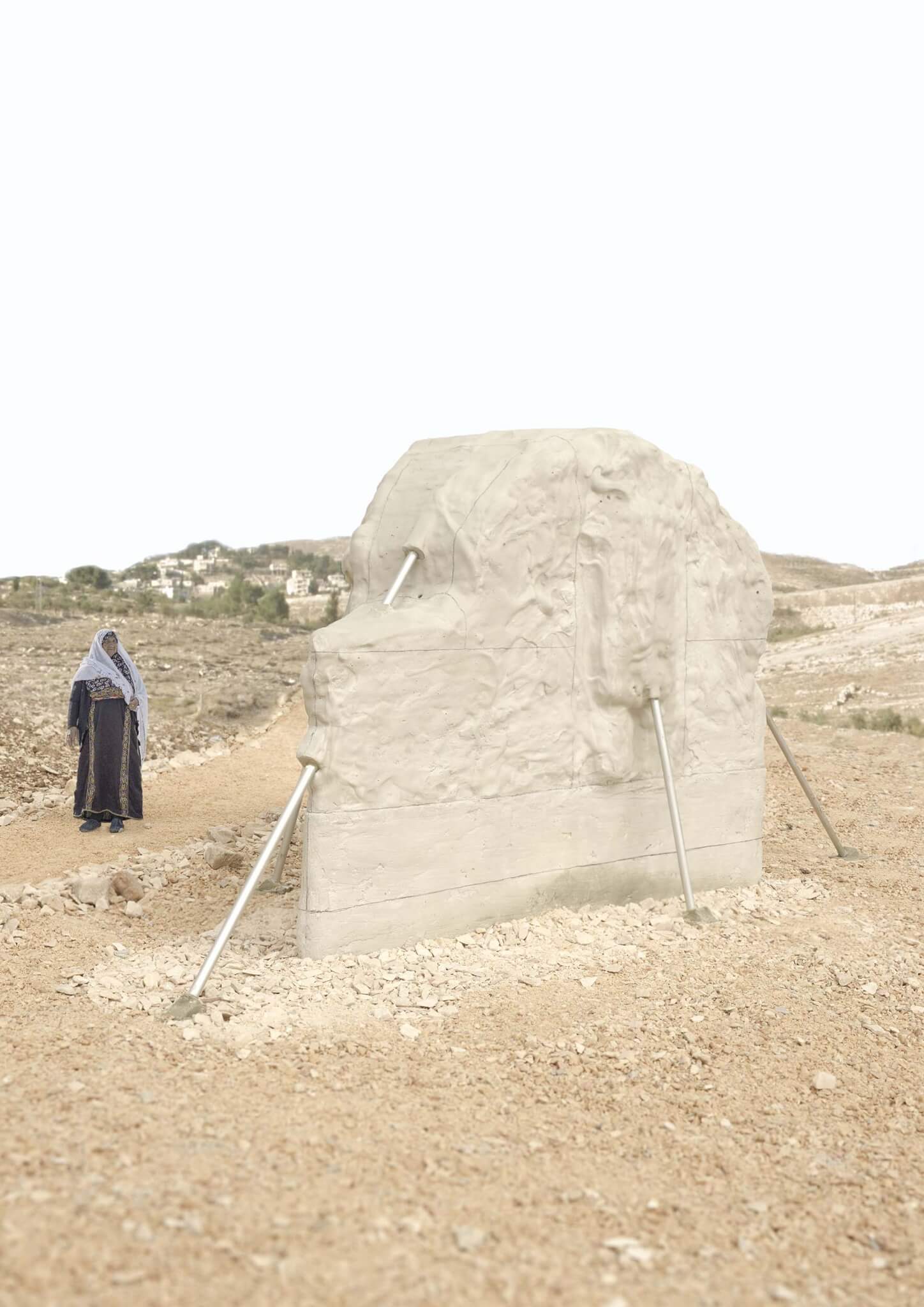
AN: How is the feeling different in Bahrain than it is in Switzerland or Germany?
AH: Bahrain is open to all kinds of voices; the country has many religions and religious buildings, women and men are equal, and alcohol is allowed. It’s a country of trade, with people coming in and out. It is a nice and welcoming place to live, where you can quickly feel at home. Across the Arab world, I see that there is an unshaken solidarity and empathy with the Palestinian struggle for self-determination.
I have visited Palestine several times and witnessed the aggression and the limitations of where you are able to go and what you are able to do. It is a horrible situation. People are being tortured and punished every day. Most of us would die from it or get depressed. Or if we had the strength, we would fight back eventually. In the West, we view Israel as an organized democracy, but its latest campaign has killed thousands of children. I think the thinking about this situation is being challenged, and it’s about time.
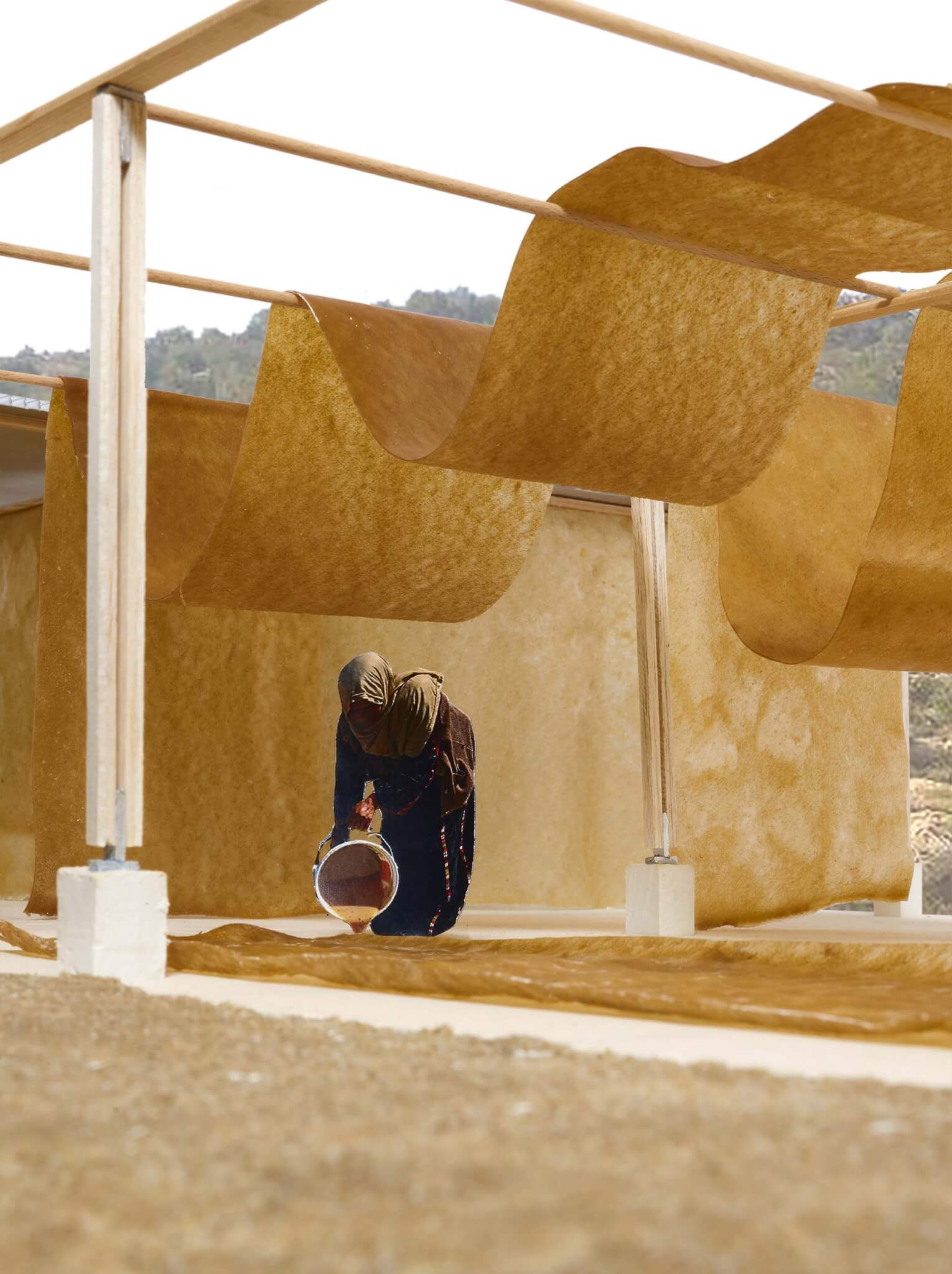
AN: You mentioned architecture being part of the settler-colonial apparatus. How do you think about that relationship? Has it changed how you think about your architecture? I know it’s hard to separate being a human being from being a professional.
AH: In architecture we are concerned about the site and its place and how we relate to wider systems, which are regularly studied by landscape architects and urban designers. We often have a narrow view, but generally I think the role of architecture is to enhance its place.
It’s the opposite with the Israeli settlements, where they build nice housing with recognizable rooftops from the sky so Israeli jets know which is a Palestinian house and what is an Israeli house. Then fencing and walls are built to protect Israelis, but then they need a road, and then it becomes a walled road where only Israelis can drive. This architecture is used to block access and to disconnect Palestinians from their land.
Another aspect of this is that things, especially around Jerusalem, are built in a historical style, as if they were always there. Buildings in this place are built not as a continuation of tradition but to change our understanding of history. Archaeology is a powerful tool, and that’s why archaeological sites in Gaza are being bombed: because they show cultural heritage and a connection to a place. And the moment you eliminate that, it wipes out a culture. There seems to be a need to erase anything that reminds us of that history, which is in part why Weizman’s work with Forensic Architecture is so powerful.
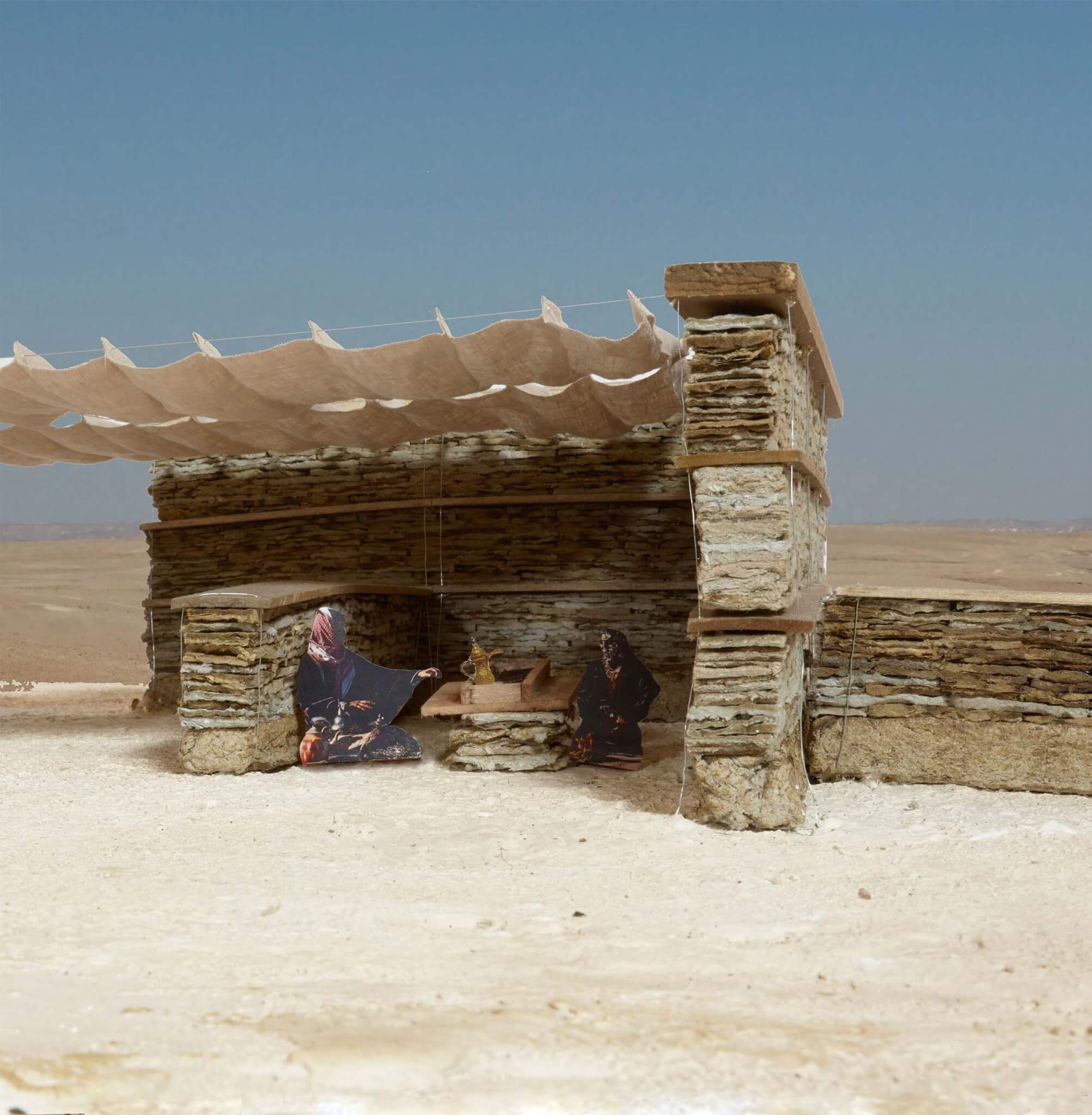
AN: With all that’s happening, where do you find hope?
AH: In my love for people. When I work on my architecture, I have an inner dialogue when making the work. My creative process is to be filled with doubt. I don’t build “with the community,” so I’m not a community architect. But the community, in my view, should decide what’s best for themselves.
The questions in my work are fundamental: My projects deal with fire, earth, and water—primary things. I’m interested in how we construct our environment out of these materials in interesting, beautiful, and intelligent ways. These things are created by people and exist to be enjoyed by people, and I love that aspect of it.
I have nightmares about what is happening in Gaza because it is so bad. It is catastrophic. I don’t sleep well, and I want people to have better lives, so I thought, “In my position as a professor and an architect, what can I contribute?” Because I have a decent Instagram following, I’ve been using it to share attention. It’s an intense time that is emotionally draining, and then I wake up every day and start again.
AN: I also wanted to ask about photography. You worked for a while with Bas Princen. How do you make sure your work is seen in a way that you like?
AH: Bas is more of an artist than a photographer. Yes, he photographs architecture, but his work is more autonomous than documentary. Bas stopped photographing my work when I moved to Bahrain, so I bought the same camera he uses and started doing it myself. I enjoy it a lot, but my photography is not something on its own but is my way of being able to communicate my work.
I’m trying it out in real time as things get placed. Lately I’m more at ease with the photography of my projects. Early on I was angry with magazines when they cropped even a sliver of the photo! Now I’m more relaxed because I know we live in a visual culture. Even on Instagram, things get cropped and formed; it’s nice that there are so many different realities of the same thing. I actually enjoy it, because it removes the stiffness of architecture. So I started photographing things in a more relaxed way. Then magazines said, “Sorry, but your building is not completely showing in the photo; it’s cut off at the top.” And I said, “Yes, I did that on purpose.” I thought it was nice that you cannot see the whole building!
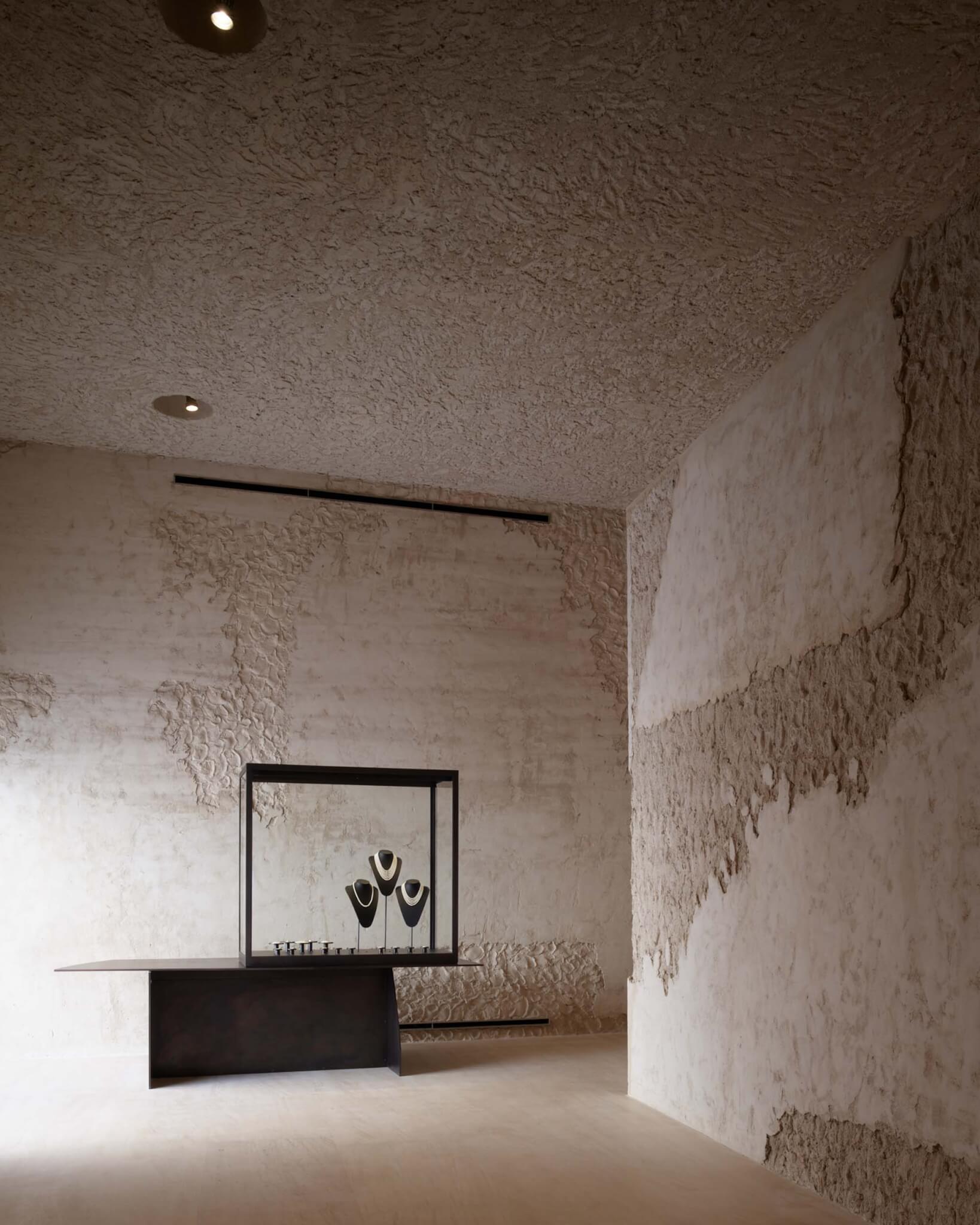
AN: Your wife, Noura Al Sayeh Holtrop, is also an architect. What is your creative dialogue like with her?
AH: Noura has been working with Shaikha Mai bint Mohammed Al Khalifa at the Bahrain Authority for Culture and Antiquities for over a decade. Shaika Mai previously started an NGO for the preservation of cultural heritage. She is interested in culture and invites speakers and musicians from all over the Arab world, mostly. She also made sure that buildings here were preserved during the country’s modernization and was responsible for the UNESCO designation. She has done a lot for the country. Noura is her advisor for architecture and heritage projects.
But she’s also a good practicing architect. She has completed one building here, which is an architecture exhibition space made with Leopold Banchini Architects. It is beautiful and Brutalist. She is my Lina Bo Bardi. I hope she will do more one day but for now this cultural work is her focus. We have different heads, and we are both strong people, but we are supportive and give each other space.
AN: Is there anything else we should discuss?
AH: This is the first conversation I’ve had where the question of Israel and Palestine has been connected to my work, so it’s new. But I do have a relationship to the Middle East, so rather than seeing my work and that relationship as two separate things, it is rightfully united. This connection is an agenda in my work, and that relationship should be discussed. It makes the ideas more sincere. That’s why I also started to do this with my teaching. I don’t want to be reactionary and polarizing, but I also should not avoid what needs to be addressed, engaged with, or supported. That’s what I can do through my work. This is an important conclusion, because you are the first one who has put this question at the center of the interview. I also see my work with this view, and it’s a good thing to talk about it as such.
The statements in this interview reflect the views of the speaker and were not composed or directed by AN.







